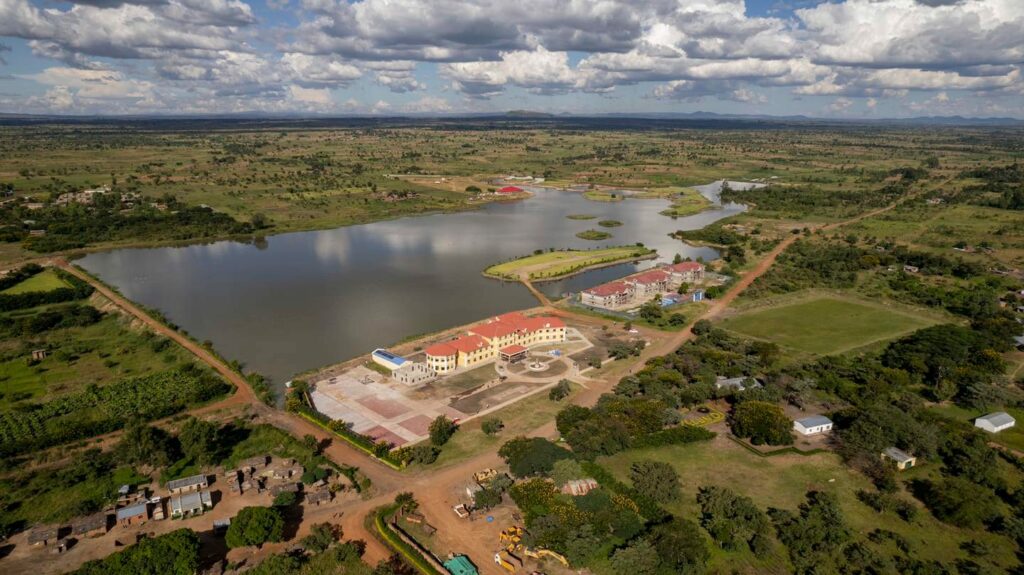In early 2022, the Malawi Government launched two ambitious projects to boost infrastructure development, economic growth and job creation in the country. The Tourism Investment Master Plan was launched in April and the Malawi Secondary Cities Project was launched a month later in May.
Malawi Vision 2063

Both these projects were launched to contribute to the realisation of the Malawi Vision 2063, a blueprint to create an inclusively wealthy and self-reliant nation. MW2063 has three pillars, namely Agriculture Productivity and Commercialization, Industrialisation, and Urbanisation.
The 20-year Tourism Development Master Plan lists 103 tourism and infrastructure projects while the Secondary Cities Project has identified eight new cities in the country. Several of the tourism projects in the master plan are located in the proposed secondary urban centres.
Following up on articles I wrote about these two projects soon after their respective launches, I find out what progress has been made nearly two years later.
Malawi Tourism Investment Master Plan projects
The tourism investment master plan set aside 10 of the 107 projects as priority tourism development projects. These projects include a transit facility at Songer Border Post, resorts in Salima and Cape Maclear, waterfront facilities in Liwonde and Nkhata Bay and a cable resort in Mulanje. According to the Department of Tourism public relations spokesperson Joseph Nkosi, as of the end of 2023, none of the priority projects had been taken up.
The department has been pitching all projects, particularly the 10 priority projects, to investors at various forums, including the Malawi Investment Forum in South Africa. The department has also collaborated with the Malawi Investment and Trade Centre to engage various stakeholders, some of whom have expressed interest.

Nkosi, however, noted that new developments that were not in the plan, like the Kalipano Resort that opened in May last year, are a welcome development that supports the Malawi 2063 urbanisation pillar.
Kalipano is a 54-room resort located in Dowa, 86km outside Lilongwe city. Sunbird Tourism plc manages the facility and has a man-made dam for experiential fishing and water sports. There are plans for other developments at Kalipano, including an airfield and golf course.
Malawi Secondary Cities Project
The secondary cities plan is a flagship program initiative funded through allocations in the current national budget across various ministries, including the development budget. As such, priority has been placed on the development of three cities: Chipoka (Salima), Bangula (Nsanje) and Kasungu.

According to the National Planning Commission’s Information Officer, Maxwell Maida, the Fisheries sector is advancing a project for Chipoka. It is in its design stage, focusing on port and fisheries infrastructure development. Simultaneously, the Tourism sector is advancing projects in the tourism master plan encompassing Salima.
Maida said that a base map for Chipoka was produced, and the city’s boundaries, covering 2,589 hectares, were demarcated. The Fisheries industry is set to anchor the city, with the Department of Fisheries identifying a potential area for aquaculture investment. In Kasungu, the process of boundary identification, with internal consultations among government agencies, is underway.
In Bangula, Maida said that a base map was produced and boundaries covering 3,235 hectares were demarcated, with 100 hectares earmarked for industrial activities, anticipating that the Shire Valley irrigation scheme would produce processing.

The Communications Officer for the Shire Valley Transformation Programme (SVTP), Alice Kaunda, confirmed her organisation is working on the Bangula City Urban Structure master plan. SVTP is sponsoring the development of the larger Nsanje District Physical Development Plan, the Chikwawa District Physical Development Plan as well as the Chikwawa Boma, Nchalo and Ngabu Urban Structure Plans. SVTP has incorporated a drainage master plan for the two districts to mitigate floods in the wake of increased cyclones due to climate change.
Natural resource management and eco-tourism
The tourism development master plan does not list any projects in Bangula. However, the proposed city has the potential to attract tourism to the Elephant Marsh, a critical ecological area for mammals, fish and migratory birds. Kaunda said that SVTP has also been engaged in natural resources management in Chikwawa and Nsanje. They have been involved in livelihood support activities and facilitated the formation of community conservation areas in the Elephant Marsh. SVTP also helps communities promote their eco-tourism activities in Elephant Marsh, Lengwe and Majete Game Reserves and Matandwe Forest Reserve.
Secondary cities as Special Economic Zones
Malawi Parliament on 6th December 2023 passed into law the Special Economic Zones (SEZs) Act. The zones are key in attracting investment and catalysing growth in the country. It will also be key in realising the successful implementation of both the Malawi Tourism Master Plan and the Malawi Secondary Cities Project. The Act has been tailored to accommodate these zones in the new secondary cities, other than just traditional industrial parks in major cities.
The new Act empowers the Malawi Investment and Trade Centre (MITC) to be the Special Economic Zone Authority (SEZA). The SEZA has been given regulation, implementation and monitoring powers, including powers to request land from the Minister of Lands to be developed into SEZs. The land will be used for export promotion zones (EPZs), tourism and recreation zones, business parks, dry ports, ICT and innovation centres and agricultural development.
Forecast for Malawi tourism

In her forecast for 2024 on VoyagesAfriq, Malawi’s Minister of Tourism, Vera Kamtukule, is looking forward to 2024 with optimism.
“The 20-year Tourism Investment Master plan will be in its third year in 2024, and we are hopeful that at least 3 projects therein will kick off as we continue in our quest to get as many investors as possible,” she says.
To receive an occasional email of stories from the #LifeUnbound blog and other gems, subscribe below.


